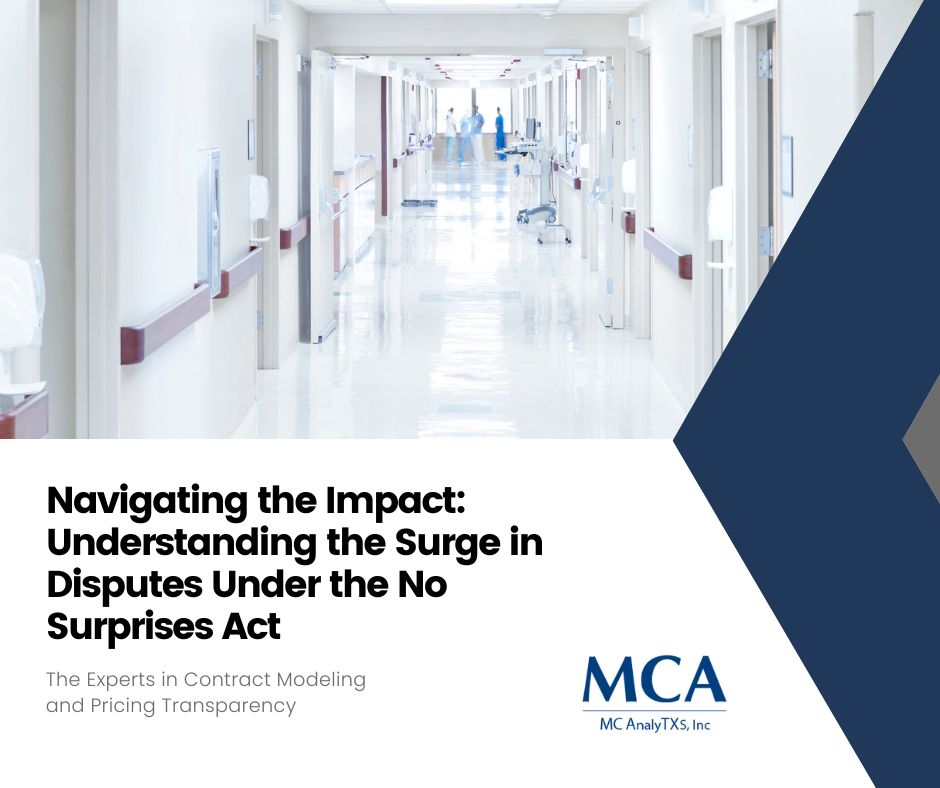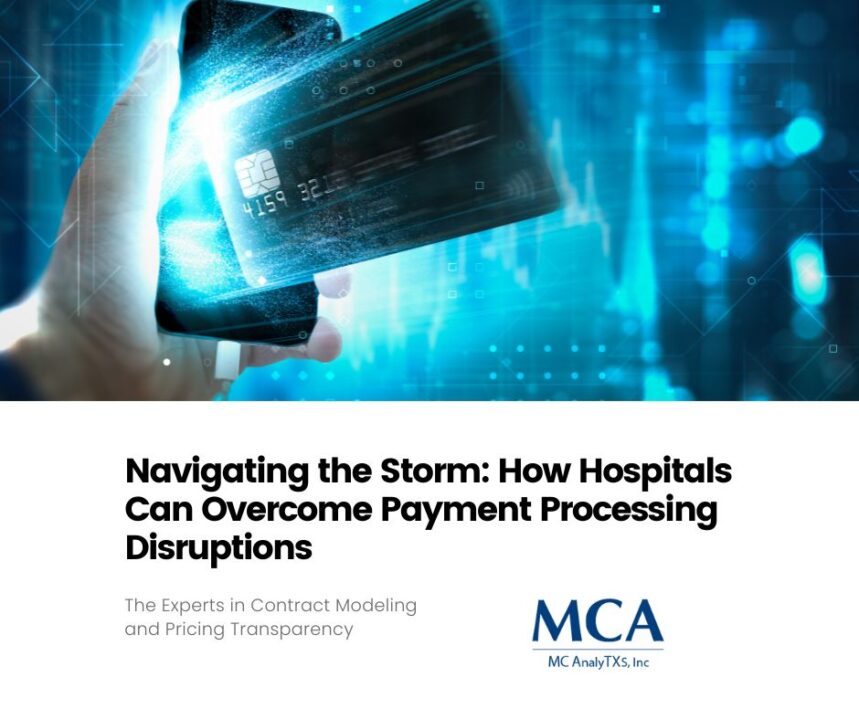
Six Opportunities for RCM Leaders to Foster a Stronger, Simpler Revenue Cycle
February 16, 2024
Improving Revenue Integrity in Healthcare: Challenges and Solutions
February 21, 2024The healthcare landscape is always evolving, and with the roll-out of the No Surprises Act, the revenue cycle management sector is undergoing a significant transformation. This landmark legislation was designed to protect patients from unanticipated medical bills, yet it has spurred a dramatic increase in disputes – much higher than initially forecasted.
For professionals in revenue cycle management, this surge presents a complex web of challenges and opportunities. It demands a nuanced understanding of the Act’s intricacies, an evaluation of the factors driving dispute volumes, and a strategic approach to mitigate their impact. Let’s explore how to navigate these turbulent waters.
Understanding the No Surprises Act
Signed into law at the end of 2020, the No Surprises Act outlines guidelines to prevent unexpected bills for individuals who receive emergency care, non-emergency care from out-of-network providers at in-network facilities, and additional out-of-network services that patients cannot reasonably avoid. The Act focuses on fair billing and transparency, yet its implementation has brought about unprecedented complexity in billing procedures, leading to a surge in disputes.
Revenue cycle management professionals now find themselves at the epicenter, balancing the Act’s laudable objectives with the inherent friction between providers and payers. Moreover, reconciling patient financial responsibility under this new framework involves a meticulous and proactive approach to billing and collections.
Factors Driving Dispute Volume
The volume of disputes under the No Surprises Act is staggering, and understanding the root causes is pivotal to developing effective resolution strategies. There are three major factors driving this surge:
Lack of Clarity in Billing Practices
Billing for out-of-network services is inherently ambiguous, and the complexities of the No Surprises Act have created an environment where clear, compliant billing practices are often vague or variable. This lack of clarity is a breeding ground for disputes.
Provider-Payer Communication Challenges
The Act necessitates heightened communication between providers and payers to ensure that both parties have a comprehensive understanding of what services are being billed and at what rates. However, outdated communication methods and systems often lead to misalignment and, consequently, disputes.
Patient Education Gaps
Patients are at the heart of the Act’s protections, yet many remain unaware of their rights and the billing nuances associated with the Act. This lack of education can lead to surprise and dissatisfaction, often culminating in disputes being filed.
Implications for Revenue Cycle Management
The surge in disputes reverberates through every aspect of revenue cycle management, with profound implications for financial health, operational efficiency, and compliance measures.
Financial Health
The financial implications of unresolved disputes are significant, with providers potentially losing out on revenue. Timely and thorough dispute resolutions are essential to maintaining financial stability and preventing revenue leakage.
Operational Efficiency
Disputes also place a substantial burden on operational efficiency, requiring additional resources for resolution. A streamlined approach to dispute management is essential to prevent bottlenecks and ensure the smooth operation of revenue cycle processes.
Compliance Measures
The Act sets stringent guidelines for billing and dispute resolution, and non-compliance can lead to penalties. Navigating these regulations while managing the surge in disputes requires precision and attention to detail.
Strategies for Mitigating Disputes
Recognizing the far-reaching effects of the Act, revenue cycle management professionals must adopt robust strategies to mitigate disputes effectively. Proactivity is key, and a comprehensive approach includes:
Enhanced Documentation Practices
Clear and accurate documentation is the bedrock of effective billing and dispute resolution. Upgrading documentation practices to align with the Act’s requirements can significantly reduce the likelihood of disputes.
Proactive Communication with Payers and Patients
Fostering transparent and open communication channels with both payers and patients is pivotal. Proactively addressing potential disputes before they escalate can prevent dissatisfaction and ensure a smoother revenue cycle process.
Leveraging Technology for Billing Transparency
Digital tools can provide unprecedented levels of billing transparency. Leveraging technology not only enhances the patient experience but also facilitates clearer communication with payers, ultimately reducing disputes.
Conclusion
As the healthcare industry adapts to the complexities of the No Surprises Act, revenue cycle management is at an inflection point. The surge in disputes presents formidable challenges, but also an opportunity for innovation and a redefinition of billing and resolution practices.
Understanding the Act, identifying the drivers behind dispute volume, and implementing strategic solutions are the first steps in managing the impact. By enhancing documentation, fostering communication, and leveraging technology, revenue cycle management professionals can ensure that the No Surprises Act fulfills its intended purpose while maintaining operational excellence.
In the face of increasing disputes, a proactive and multidimensional approach is non-negotiable. It is only through such meticulous and strategic efforts that organizations can not only weather the storm but also emerge as leaders in the new era of healthcare billing and patient protection.





